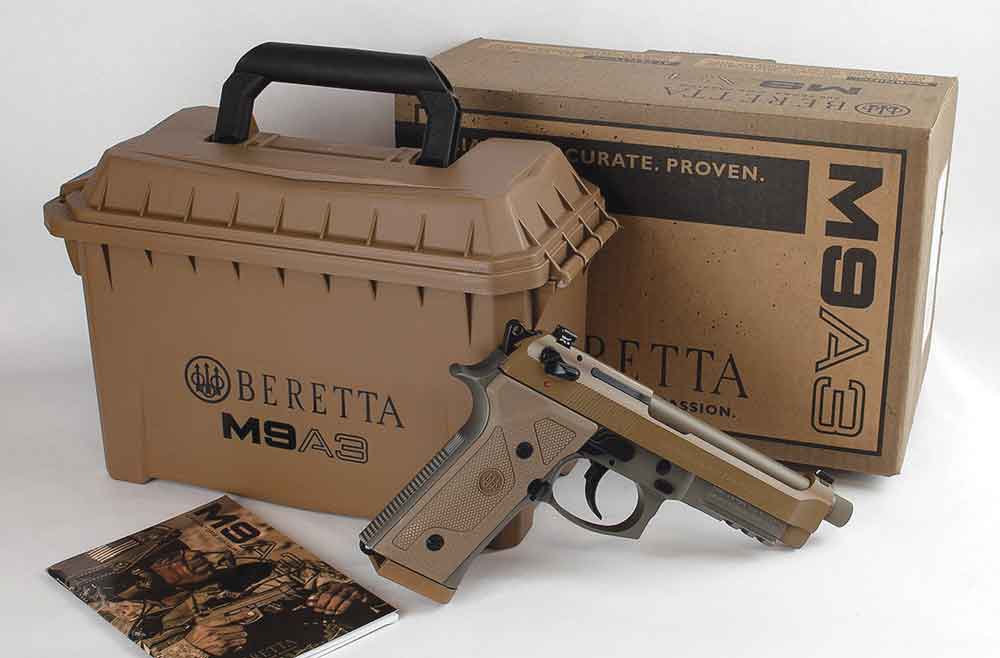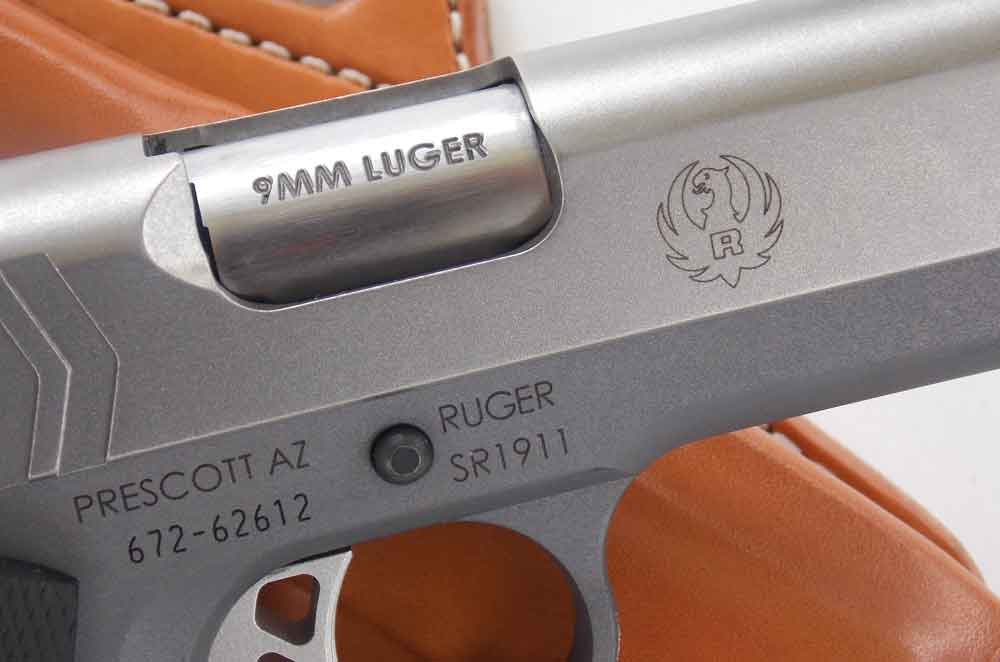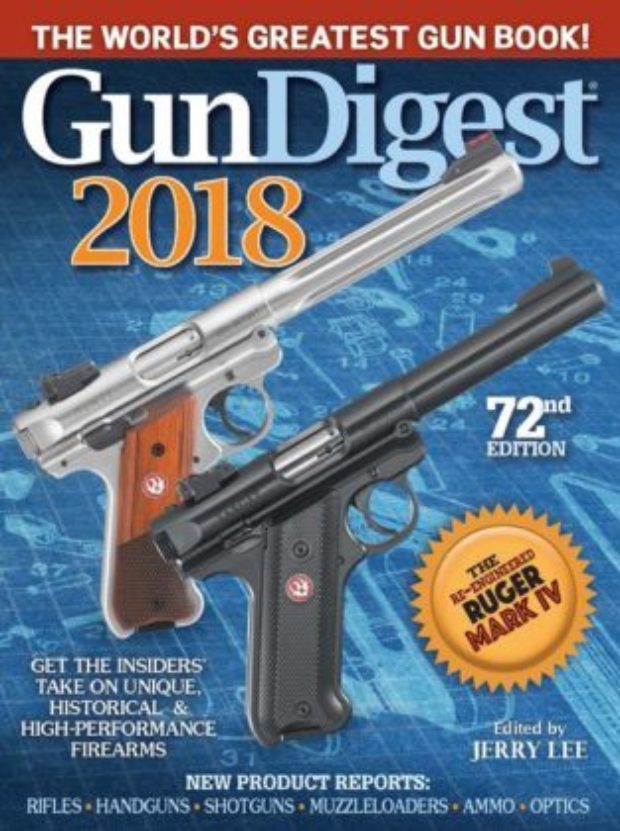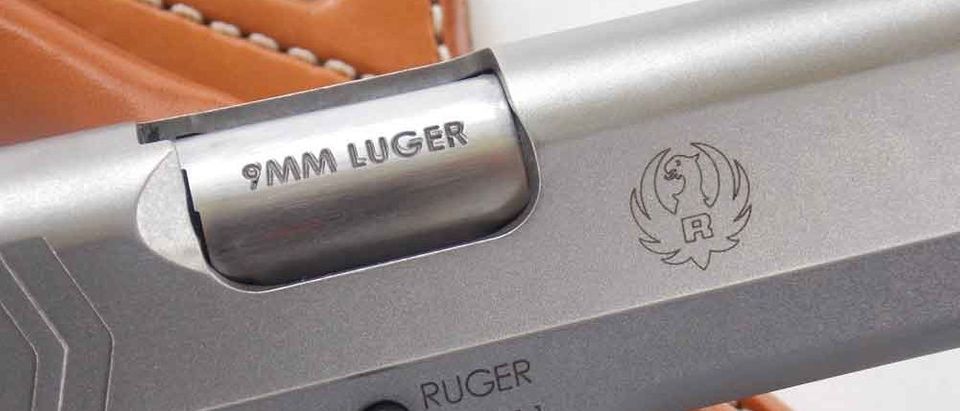By Robert Campbell, Gun Digest
Why is the 9mm America’s most popular handgun caliber?
- The 9mm’s popularity has sky rocketed, offering shooters a high-powered round that is still manageable.
- Married to the most popular military sidearm in the world, the Browning Hi-Power, the acceptance of the versatile German cartridge soon spread.
- More recently, the 9mm has become a popular concealed carry caliber, due to even new shooters being able to master the most important factor to defensive shooting in pistols chambered for it — shot placement.
- Affordability, wide selection of guns and solid ballistics all continue to make the 9mm the most shot round in the country.
While there may be better cartridges for some situations, none have the winning combination of power, accuracy and economy exhibited by the 9mm Luger. When handgun and ammunition sales are rung up, shooters vote with their hard-earned dollars, and after all these years, the Nine wins the popularity contest.
It remains much more popular than the .40 and the .45. The .40 S&W is a compromise caliber but doesn’t seem to have won many converts outside of police work, and that position has been seriously eroded. The .40’s snappy recoil in compact handguns is one reason for its loss in popularity. Another is that the 9mm is practically as effective as the .40 given the new breed of highly developed 9mm ammunition.
The 9mm is a high-powered handgun cartridge — there is no doubt about that, but it isn’t a cartridge that demands a burly he-man to control it. Slightly built shooters and female shooters have no problem with the 9mm when proper technique is applied. The caliber is so popular that it is being offered in handguns that once were bastions of the .45. Ruger’s introduction of the SR1911 9mm has been met with great applause and expectation. This handgun is easy to shoot well and accurate. An aluminum-frame 1911 is easy to carry all day and the lightweight Ruger 9mm doesn’t kick much compared to the lightweight .45. Yet, with modern loads, the 9mm has real authority. Even the .38 Super has lost a portion of its limited popularity with the improvement of the 9mm Luger.

–
The 9mm has come a long way since its introduction as a German service cartridge in 1902. The German Luger was used extensively in World War I, and the first submachine guns were chambered for the 9mm Luger cartridge.
Introduced in 1935, the Browning Hi-Power went on to become the single most popular service pistol in the world. The armed forces of over 100 nations acquired the Browning, all in 9mm Luger chambering. After World War II the allies had excellent 9mm SMGs in the form of the Sten and Sterling, and others were developed. The 9mm Luger became the 9mm NATO cartridge in due course.
Along the way there have been certain milestone handguns that made the popularity of the 9mm handgun inevitable. The ascendency of the Browning Hi-Power handgun is one milestone. Another is the adoption of the 9mm Luger cartridge by Poland for use in their Radom pistol. This is to the best of my knowledge the first instance of the adoption of the service cartridge of an enemy nation based purely on performance. The Walther P38 was a highly influential 9mm handgun. The allies were so impressed with the P38 that eventually the United States adopted a highly modified P38 pistol in the form of the Beretta 92. Today, the Beretta A3 variant is the current service pistol, and by all indications will continue to serve well into the next decade. (Editor’s Note: Following the results of the Army’s Modular Handgun System (MHS) competition this year, it looks like SIG’s P320 will be the next service handgun)
It is also a good cartridge for concealed-carry handguns. It is controllable in a handgun of 21 ounces or more. In compact pistols such as the Glock 19, the cartridge is downright docile. A steel-frame pistol such as the Browning Hi-Power or CZ 75 offers brilliantly fast recovery from recoil. The 9mm is easily controlled in the larger pistols and never becomes a bear even in subcompacts.
Even shooters who later will move on to heavier calibers should begin with the 9mm Luger cartridge. I have seen a number of students come to my shooting classes with a handgun that recoils too much. A new student will likely become discouraged or develop a flinch that is difficult to train away. The single most important component of combat marksmanship is shot placement. The typical beginning shooter is well served with the 9mm. If you insist on a larger caliber you should learn to use a full-size-frame handgun if you choose the .45, or a Glock 22-size if you choose the .40 caliber. If the pistol is too heavy, you will not carry it — and if it kicks too much you will not practice with it.
There are several more reasons why the 9mm remains so popular.
Economy
It isn’t unusual to see special deals on the price of 9mm Luger ammunition. Full-metal-jacket (FMJ) loads are commonly available at good prices. Just check the ammo section of Cheaper Than Dirt!, Midsouth Shooters Supply, Brownells or Cabela’s for bargains. Sale prices for 9mm FMJ is often half the price of comparable .40- and .45-caliber loads. Even premium defensive ammo is less than the larger calibers. On average, my recent searches indicate that ammunition can be found in 500-round quantities for the average price of 350 rounds of comparable .45 ACP cartridges. This means more practice. Yet, it is the larger caliber that demands more practice ammunition to master! Use the logic ladder.
The Guns
Some of the finest handguns in the world are chambered in 9mm Luger caliber. These include the SIG P226, Beretta 92, HK VP9 and the Glock 19. They are famously reliable and accurate. Even inexpensive pistols such as the Canik T 100 will get the job done, simply with a little less style. In compact carry guns, the Smith and Wesson Shield, Glock 26 and Springfield XD are excellent choices. This year has seen the introduction of the Ruger SR1911, the Honor Defense Honor Guard and the Arex Rex Zero, all of which exhibit excellent quality.

–
Ballistics
This is the big question. Despite some pretty strange statements and non-standard science, the 9mm cannot produce a wound equal to the .45 ACP, given similar bullet technology. The .40 S&W and the .357 Magnum give superior results in testing. But then the 9mm can be enough with the proper load, and that is the bottom line. A loading with good quality control and cartridge integrity is the first choice. Every maker doesn’t have the same quality control, primer seal and case mouth seal, and especially bullet technology. The loading must maintain the balance of expansion and penetration. This means adequate penetration must not be compromised. This means 12 inches of water or gelatin. (Law enforcement, with the need to penetrate barriers and vehicles, needs more penetration.) It has enough energy to maintain high-velocity penetration and expansion.
No, the 9mm isn’t my choice for defense against a pack of feral dogs or a bear, but for most personal defense situations, the 9mm has the necessary power with proper loads to get the job done. And the best loads mean a lot! The 9mm FMJ loads we use for practice are poor defensive loads, but then few of us deploy a FMJ load if we have a choice. Good control, accuracy and a good balance of expansion and penetration work. As an example, Hornady recently introduced a 124-grain XTP +P load in the American Gunner line. This loading is affordable and offers excellent performance from my personal testing. Also, Winchester offers the PDX in 124-grain +P that offers excellent wound ballistics.

–
If you prefer not to use a +P loading, there are a number of standard loads that offer good performance. Black Hills Ammunition offers the EXP (Extra Power) loading that is as fast as possible in 9mm without going into +P territory. Performance is excellent. The SIG Sauer Elite 124-grain V Crown is also a good, fast load not +P rated. The Hornady Critical Defense 115 grain is another solid choice. Winchester’s Silvertip has been around for decades, although the newest version is considerably improved over the original. These loads all offer good performance, are readily available and exhibit excellent quality control. Federal’s 124-grain HST is another good choice. Federal recently introduced a low-recoil 150-grain HST specifically for use in compact 9mm handguns. Performance is interesting. While recoil is low, expansion is good.
The 9mm’s future? It is more popular than ever and is an excellent choice for personal defense — given a reliable handgun and intelligent ammunition choice.
Thanks to Gun Digest for this post. Click here to visit GunDigest.com.
The 72nd edition of “The World’s Greatest Gun Book” is out! Click here to order your copy.













